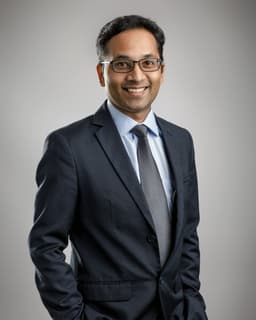
Your guide to Men’s grooming: A USD 4 Bn opportunity in SEA
For the generations before millennials and gen Z, men’s grooming was all about a quick shave, a splash of aftershave, a bar of soap, and a trusty deodorant/ perfume. Grooming was more about function than finesse, focused on hygiene rather than identity. But times have changed and so has the modern man. Skin care and hair care are now the baseline for most men influenced by factors such as rising disposable incomes, effective digital engagement through influencers, and an increasing acceptance of men’s grooming as integral to personal well-being.
For brands? This is an exciting opportunity to capture the USD 2.1 – 2.3 Bn (doubling to USD 4 Bn by 2029) men’s grooming market in Southeast Asia (SEA).
1. Men’s grooming is one of the fastest-growing BPC categories in SEA, category growth in SEA is 2x other prominent BPC markets

The men’s grooming category is positioned in a high-growth, low-competition quadrant, making it strategically attractive. SEA markets such as the Philippines, Malaysia, and Indonesia are leading the growth curve with 9–12% CAGR which is 2x of other prominent markets and even ahead of other large developing markets like India and China.
2. Men’s grooming is transforming from “fix It/ problem solving” (e.g.: shave for work) to a holistic “feel good” grooming (e.g.: to feel confident)

Men’s grooming in SEA is evolving from basic hygiene-driven behavior to holistic self-care focused on well-being and confidence. Adoption progresses through 4 stages: starting with bath/shaving and moving toward skincare and full grooming rituals. Penetration differs sharply across phases, reflecting affordability, awareness, and aspiration gaps. Future growth lies in skincare and holistic grooming, led by urban, wellness-focused males as awareness levels rise.
3. The SEA men’s grooming market, aided by several tailwinds, is expected to touch USD 4 Bn by 2029

Why men’s grooming outlook remains very positive in the region:
- Male influencers are showcasing skincare routines, facial tools, and wellness. KOLs promoting skincare routines have 4–6x ROI in male categories. Thus, money is where the mouth is.
- Young population and rising disposable incomes are allowing men to try skincare for the first time and form grooming habits now.
- Masculine wellness” is becoming a category linking sleep, skin, and stress. Consumers are already taking supplements and protein, now adding basic skincare as a routine. Taboos are disappearing
4.Skin care and hair care are amongst the fastest growing men’s grooming subcategories, acting as an anchor for brands; well ahead of basics such as deodorants or mass soaps/ shampoos

Skin and hair care have emerged as the dominant growth drivers in men’s grooming across Southeast Asia (2019-2024), surpassing traditional segments like Bath and Deodorants to become the anchor categories. Notably, Indonesia, Thailand, Vietnam and Malaysia, and the Philippines show particularly strong skincare growth, indicating a significant consumer evolution towards more sophisticated routines.
But brands need to be cognizant of what men want and work upon product, pricing, and overall positioning

Winning in men’s grooming requires brands to align messaging with male aspirations. Men’s grooming is at an inflection point in SEA. Brands must shift from viewing men as passive buyers to targeting them as evolving, wellness-conscious consumers. Focus on education, confidence, and routine building.

Written by
Roshan Behera
Partner
Roshan is a Partner based in Singapore and focuses on Southeast Asia. His sector coverage includes e-commerce, logistics, fintech, eB2B, on-demand services, and other emerging sectors.
Talk to me
Viet-Nomics: Southeast Asias Rising Economic Star

USD 30 Bn Market in Motion: New Revenue Models Shaping Mobility & Delivery in SEA

Education: Missing Link for Cryptocurrency Adoption


